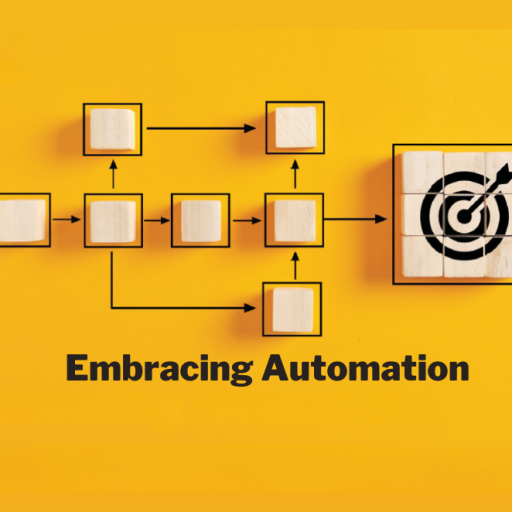Darin Boik Will Share First-Hand, Practical Insights into Advancement at MHEDA’s Automation Solutions Conference
By Elsbeth W. Russell
From robots and machinery to conveyor systems, case palletizers, automated guided vehicles (AGVs), autonomous mobile robots (AMRs) and much more, automation in material handling includes a wide variety of solutions designed to reduce human interaction and streamline operations.
While the methods may vary, the objective of automation is clear: improve efficiency, minimize repetitive tasks and enhance overall operational productivity.
At MHEDA’s upcoming Automation Solutions Conference – scheduled for October 24, 2024, in Westlake, Ohio – board member and specialist in material handling systems integration and automation, Darin Boik, will share experience and insights on transitioning from static storage solutions to dynamic automation systems.
The MHEDA Journal recently sat down with Boik, the president of Advanced Equipment Company (AEC), to get some insights into what attendees can expect to learn at his session.
The Evolution of Automation in Material Handling
It’s no secret that Boik’s session, “Transitioning from Static Storage Solutions to Dynamic Automation Systems,” is timely. The demand for automated material handling solutions is steadily increasing year after year.
In fact, according to Mordor Intelligence, the market is expected to reach $70.35 billion this year, growing to $126.20 billion by 2029.
Looking internally at the material handling industry itself, an easy example of real-world success with automation includes Boik’s own company’s journey.
Originally focused on storage solutions and casters, AEC’s addition of the Hytrol Conveyor line marked the beginning of their transition to automation. However, this shift required more than just new equipment.
Building an Automation Toolbox
By forming partnerships in controls and field wiring and recruiting technical salespeople, AEC evolved into a successful system integrator. This transformation underscores the necessity of having the right tools, talent and partnerships to achieve success in automation.
“Our sales team often refer to our solutions as having a toolbox, where the toolbox is the many manufacturers that we represent,” Boik explained. “The toolbox consists of more than just manufacturers, it’s our partnerships with controls, field wiring and mechanical installation groups.”
While automation often removes some of the human element from daily work, Boik stresses that humans are essential to making the technology work for your company.
“The toolbox alone doesn’t make you successful,” he added. “You need to have the tradesman that knows how to use those tools, so having the right person is just as important if not more important.”
Still, with all this improvement automation promises, many companies hesitate to transition to automation due to the perceived complexity and the challenge of even simply knowing where to start.
If this is your situation, Boik has both sympathy and some advice.
“Moving from something like a storage solution to an automation solution can feel overwhelming,” Boik said. “Material handling is such a big world, and not having the right talent or partners can leave you struggling to find success.”
Businesses struggling to implement automation can address their concerns with some practical solutions:
- Start Small: Begin with local, small-scale projects and gradually expand as expertise and confidence grow.
- Find a Champion: Identify a team member or hire new talent with the right skill set to lead the automation efforts.
- Build Strategic Partnerships: Collaborate with partners offering products that complement and expand current offerings.
- Market New Capabilities: Effectively communicate new automation capabilities to existing customers to build a trusted reputation.
Start Small and Learn Over Time
“You have to start small and build,” Boik advises. “You don’t put a new pilot in an F-22 fighter jet to teach them to fly, you start out in a single-engine prop Cessna. Learning terminology, navigation and the avionics before even sitting in the plane. You have to do the same with automation.”
Companies in the material handling industry can also look around at nearby industries for examples of success in automation to help inspire their own work.
Businesses in markets such as manufacturing, packaging and food and consumer goods are finding themselves to be ideal candidates for automation technology due to their inherent need for the technology and their manageable project sizes.
“Many think of distribution or e-commerce systems when it comes to integrators or automation solutions groups. However, there are other industries that are more suited for companies looking to move from a distributor to an integrator,” Boik says. “Manufacturing is a huge sector with many verticals. They are already using automation and are constantly seeking to improve their processes and automate more.”
Material handling companies can also and should ease into automation projects and build the necessary expertise over time, Boik said.
“You are going to make mistakes in the beginning, it’s natural, but as you learn you can then expand into more complex projects,” he explained. “Keep adding tools to the toolbox and sharpening your skills and success will follow.”
For businesses looking to do just that, Boik’s session promises to be a great opportunity.
His practical insights, real-world examples and strategic guidance offer a roadmap for companies ready to embrace the future of automation in the material handling industry. He said that the entire event promises to be a “great opportunity to network, share and learn more about successfully transitioning into an automation solution provider.”
“Share your struggles or concerns with us,” Boik said as a message to attendees. “We are always looking to improve the conference and make it valuable to our members, helping to solve their struggles.”




